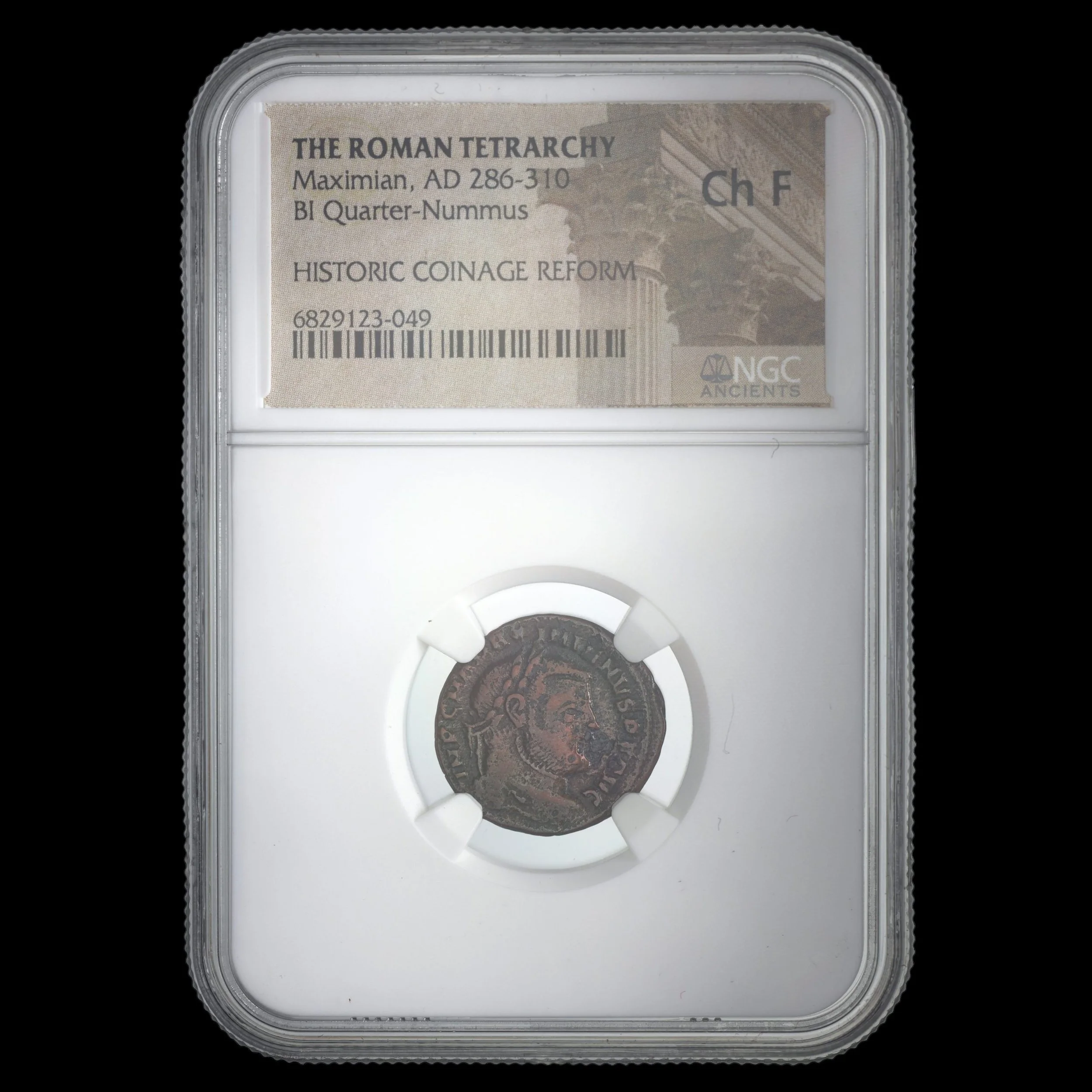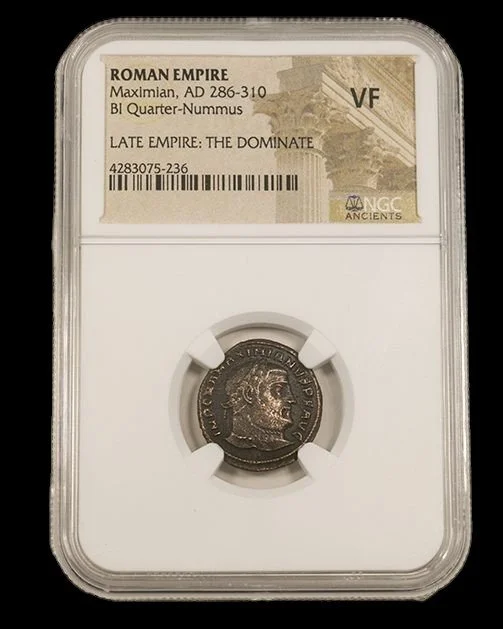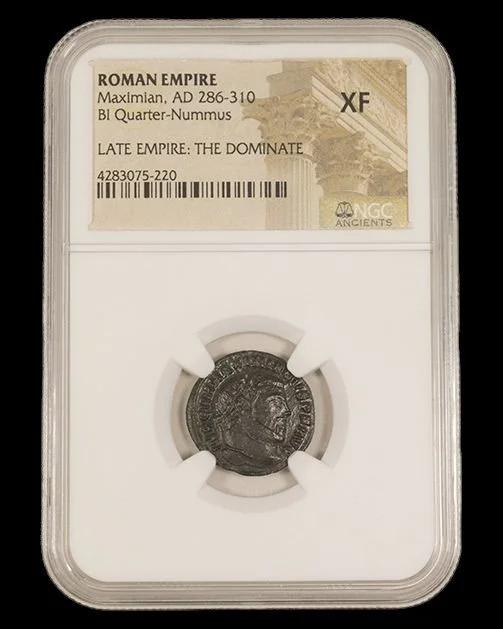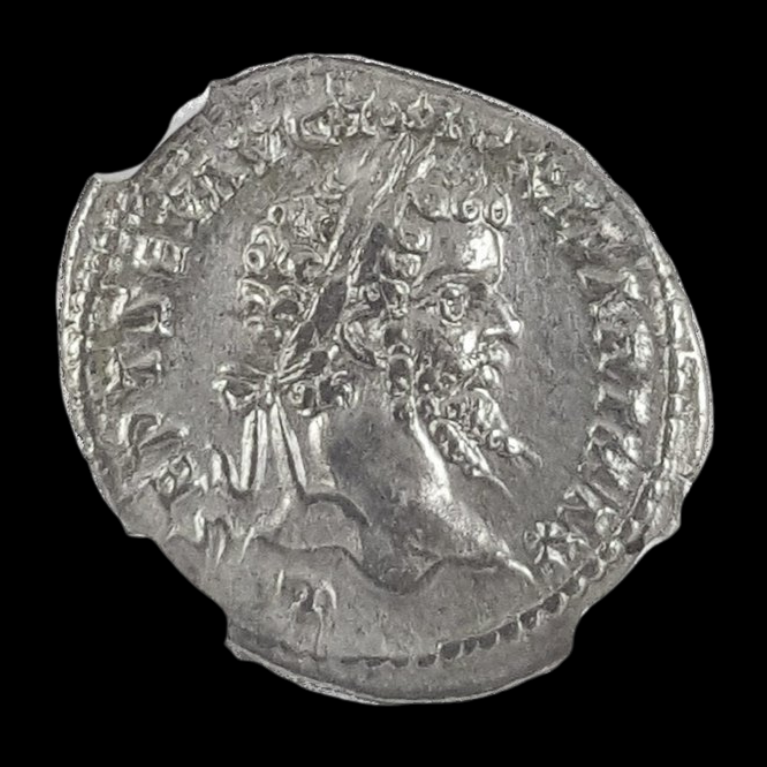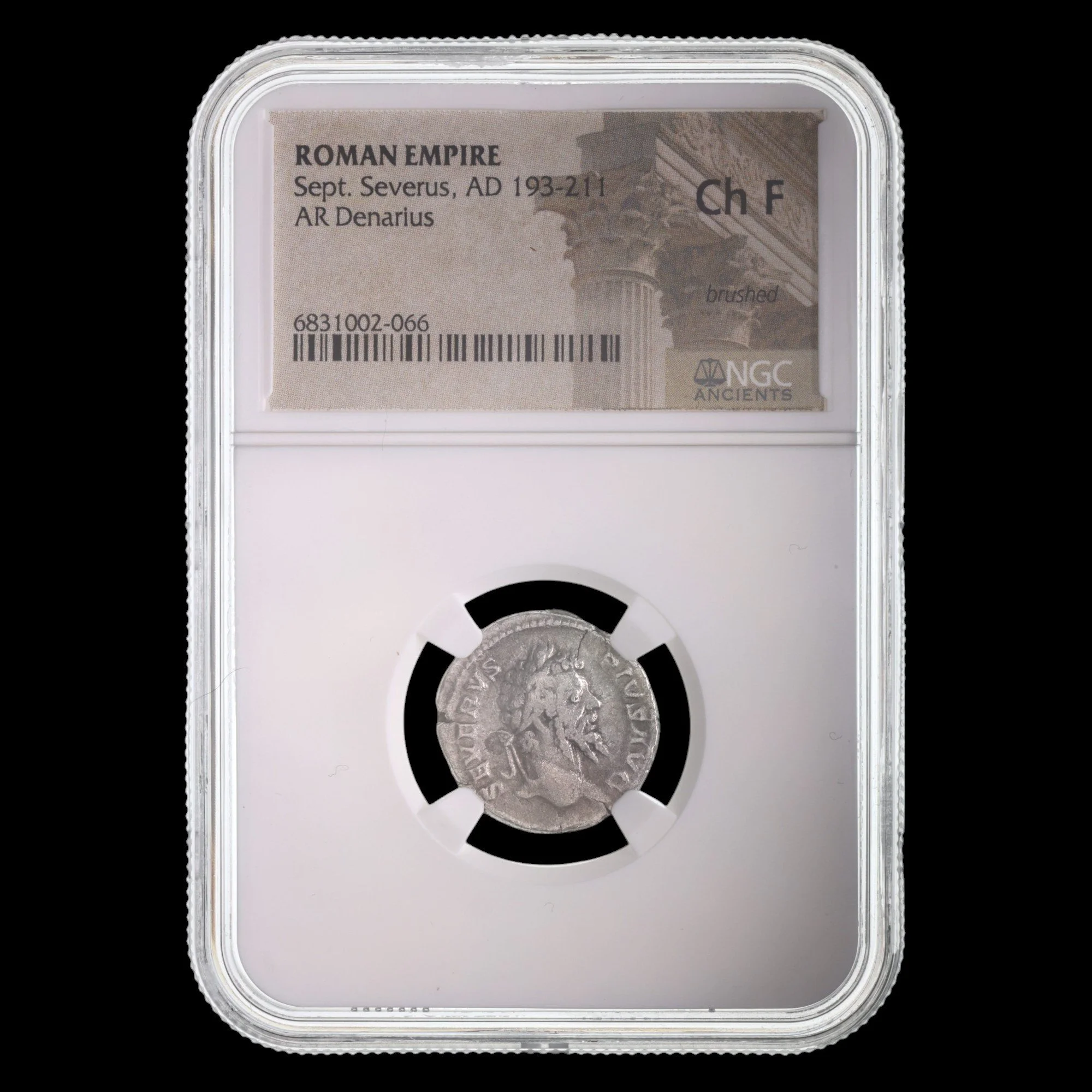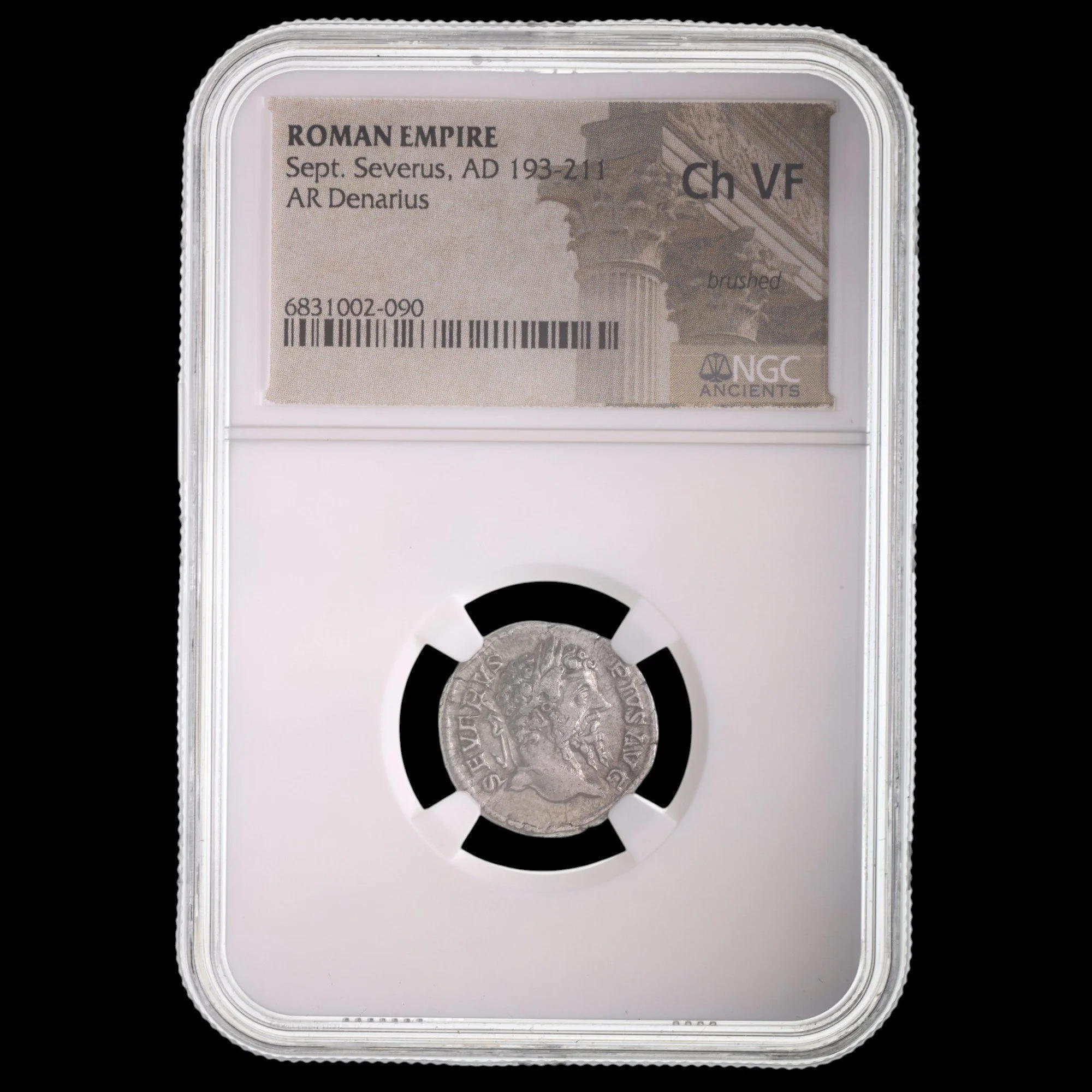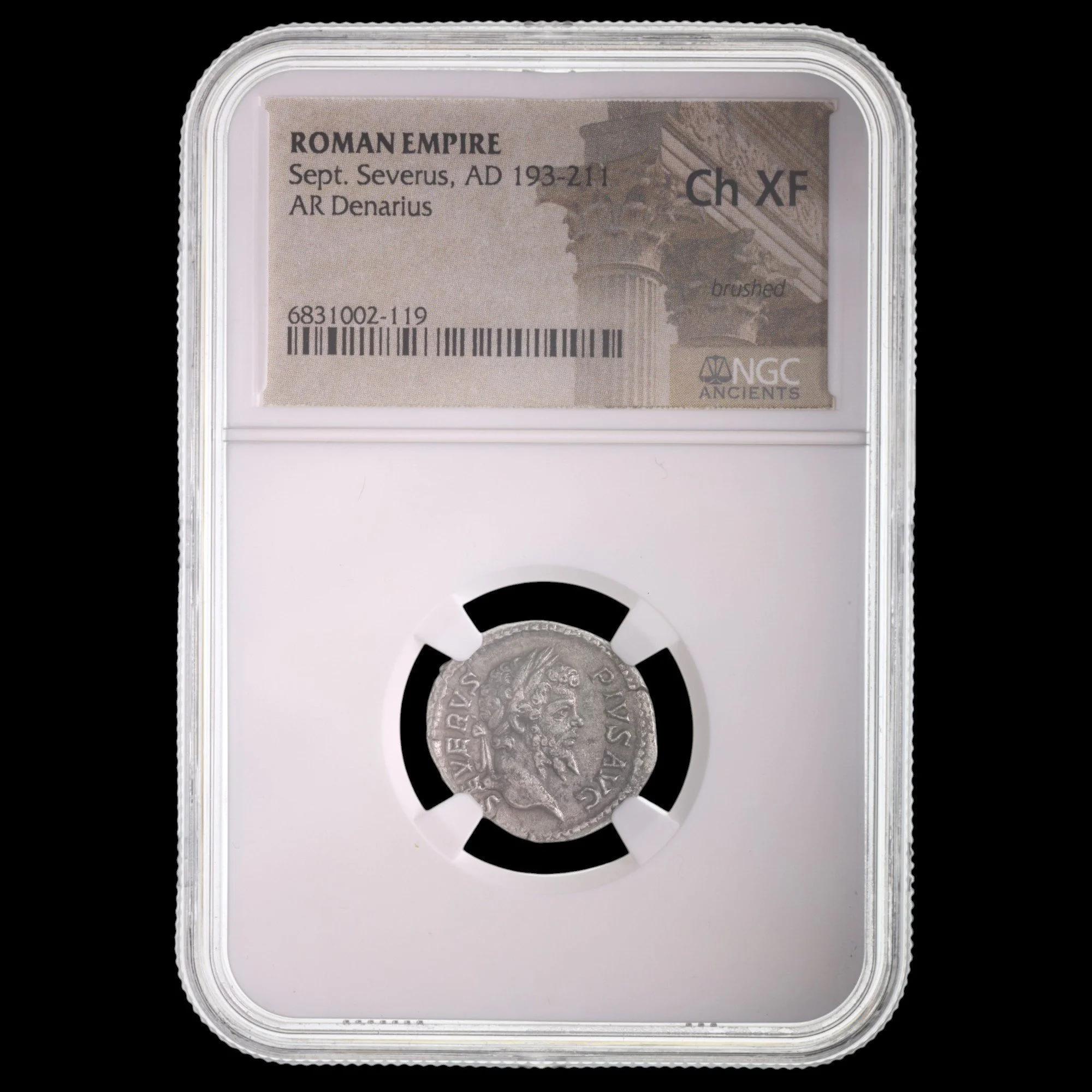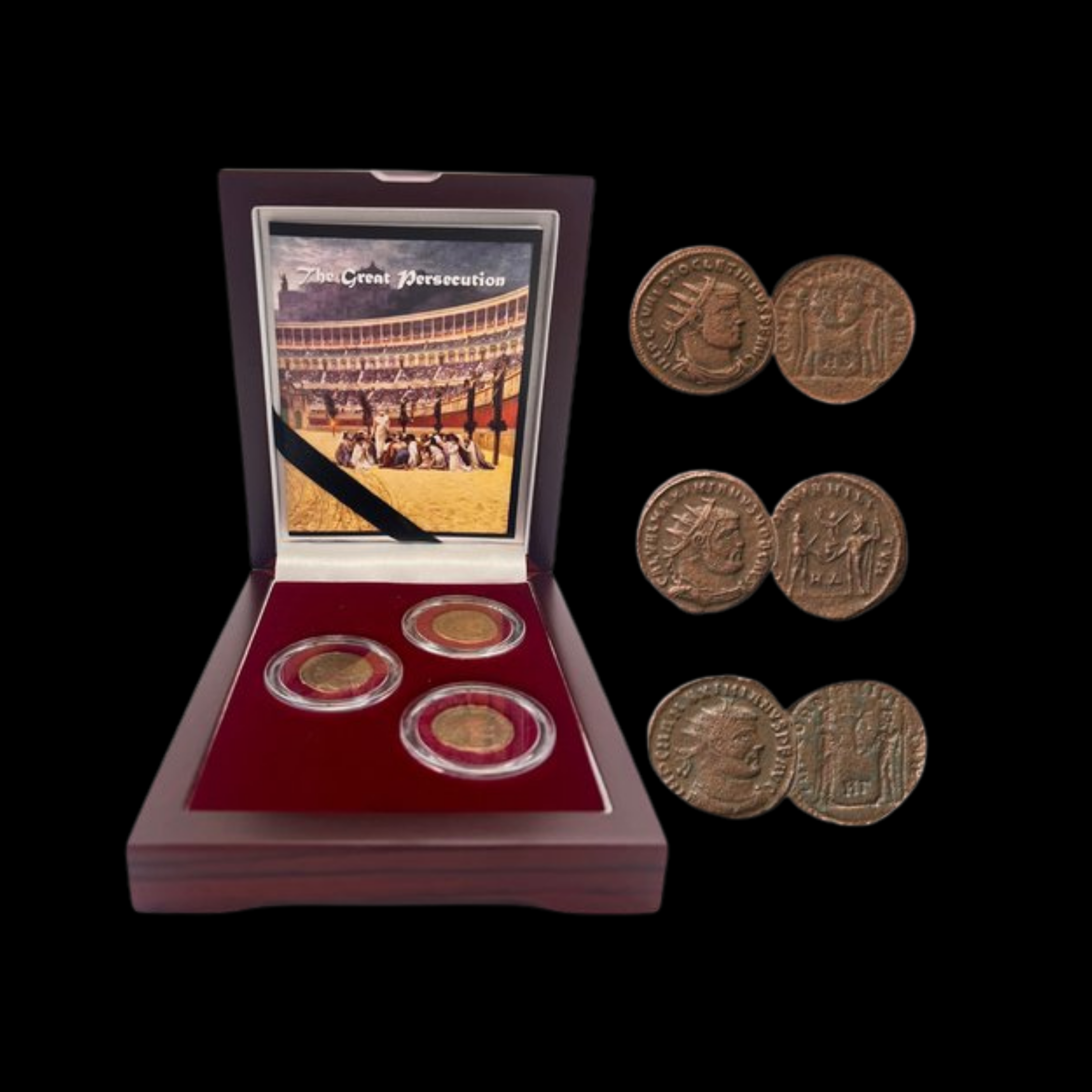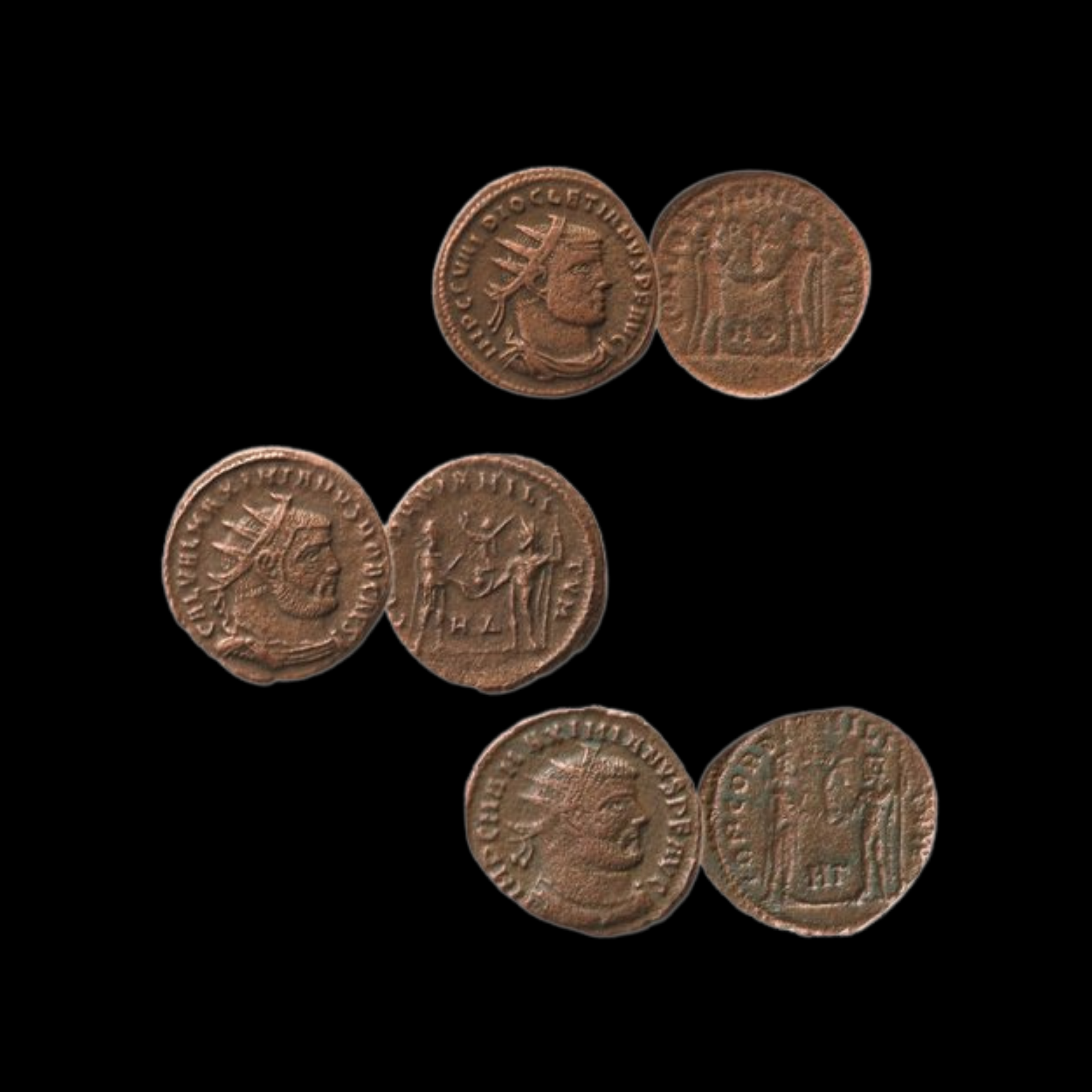 Image 1 of 7
Image 1 of 7

 Image 2 of 7
Image 2 of 7

 Image 3 of 7
Image 3 of 7

 Image 4 of 7
Image 4 of 7

 Image 5 of 7
Image 5 of 7

 Image 6 of 7
Image 6 of 7

 Image 7 of 7
Image 7 of 7








Roman Silver Coin of Severus Alexander (about 1790-1805 years ago)
The coins shown are representative examples of the grade and type, but not the actual specimens for sale. For details on NGC’s grading standards and definitions, please refer to our NGC Grading page.
Roman Silver Coin of Severus Alexander (about 1790-1805 years ago)
This silver Denarius coin was issued during the reign of Emperor Severus Alexander, the last ruler of the Severan dynasty who brought a period of relative stability before Rome descended into decades of crisis. Minted in the early 3rd century CE, this coin represents an important transitional period between the Principate established by Augustus and the later military-dominated imperial system.
Coin Description:
Front side: Portrait of Emperor Severus Alexander with laurel wreath, shown with a youthful face (reflecting his young age at ascension), clean-shaven or with minimal facial hair, surrounded by Latin text identifying him with his imperial titles
Back side: Likely depicts a Roman deity (possibly Jupiter, Mars, or Sol), personification of an abstract virtue (Peace, Providence, or Security), or symbolic scene representing imperial achievements or aspirations
Technical Details:
Silver alloy composition (though with some debasement compared to earlier denarii)
Denarius denomination (standard silver coin of the Roman economy)
RIC (Roman Imperial Coinage) reference number not visible in description
NGC (Numismatic Guaranty Corporation) certified
Minted approximately 222-235 CE
Fine to Very Fine condition (moderate wear with good detail remaining)
Historical Significance:
This coin circulated during the 13-year reign of Severus Alexander, who came to power at age 13 following the assassination of his cousin, the controversial Emperor Elagabalus. Under the strong influence of his mother Julia Mamaea, Severus Alexander brought relative peace and fiscal responsibility after his predecessor's excesses. These coins would have been used in everyday commerce throughout an empire enjoying a brief period of stability before the tumultuous "Crisis of the Third Century." During his reign, Severus Alexander successfully confronted the rising Sassanid Persian Empire in the east and employed a combination of diplomacy and military strength against Germanic tribes along the Rhine frontier. Despite his generally effective rule, his reluctance to adequately reward his soldiers led to his assassination by his own troops in 235 CE, plunging Rome into five decades of military anarchy with frequent emperor changes, civil wars, and external invasions that nearly destroyed the empire.
The coins shown are representative examples of the grade and type, but not the actual specimens for sale. For details on NGC’s grading standards and definitions, please refer to our NGC Grading page.
Roman Silver Coin of Severus Alexander (about 1790-1805 years ago)
This silver Denarius coin was issued during the reign of Emperor Severus Alexander, the last ruler of the Severan dynasty who brought a period of relative stability before Rome descended into decades of crisis. Minted in the early 3rd century CE, this coin represents an important transitional period between the Principate established by Augustus and the later military-dominated imperial system.
Coin Description:
Front side: Portrait of Emperor Severus Alexander with laurel wreath, shown with a youthful face (reflecting his young age at ascension), clean-shaven or with minimal facial hair, surrounded by Latin text identifying him with his imperial titles
Back side: Likely depicts a Roman deity (possibly Jupiter, Mars, or Sol), personification of an abstract virtue (Peace, Providence, or Security), or symbolic scene representing imperial achievements or aspirations
Technical Details:
Silver alloy composition (though with some debasement compared to earlier denarii)
Denarius denomination (standard silver coin of the Roman economy)
RIC (Roman Imperial Coinage) reference number not visible in description
NGC (Numismatic Guaranty Corporation) certified
Minted approximately 222-235 CE
Fine to Very Fine condition (moderate wear with good detail remaining)
Historical Significance:
This coin circulated during the 13-year reign of Severus Alexander, who came to power at age 13 following the assassination of his cousin, the controversial Emperor Elagabalus. Under the strong influence of his mother Julia Mamaea, Severus Alexander brought relative peace and fiscal responsibility after his predecessor's excesses. These coins would have been used in everyday commerce throughout an empire enjoying a brief period of stability before the tumultuous "Crisis of the Third Century." During his reign, Severus Alexander successfully confronted the rising Sassanid Persian Empire in the east and employed a combination of diplomacy and military strength against Germanic tribes along the Rhine frontier. Despite his generally effective rule, his reluctance to adequately reward his soldiers led to his assassination by his own troops in 235 CE, plunging Rome into five decades of military anarchy with frequent emperor changes, civil wars, and external invasions that nearly destroyed the empire.









